When the reconstruction of the St. Stephen's Hall in Buda Castle was successfully completed in 2021, the professionals had to learn an important lesson: it was extremely difficult to find fine arts masters in the country who have the craftsmanship that is necessary for the decorative elements of turn-of-the-century and other historical buildings.
Over the past 150 years or so, the assembly-line products of large industrial companies have become "monopolies" at such a level that, unfortunately, they pushed many traditional professions to the periphery, almost to the brink of extinction. These thoughts were also expressed at the conference organised by the Hauszmann Foundation on 24 November 2022, in the building of the Royal Guard in Buda Castle.
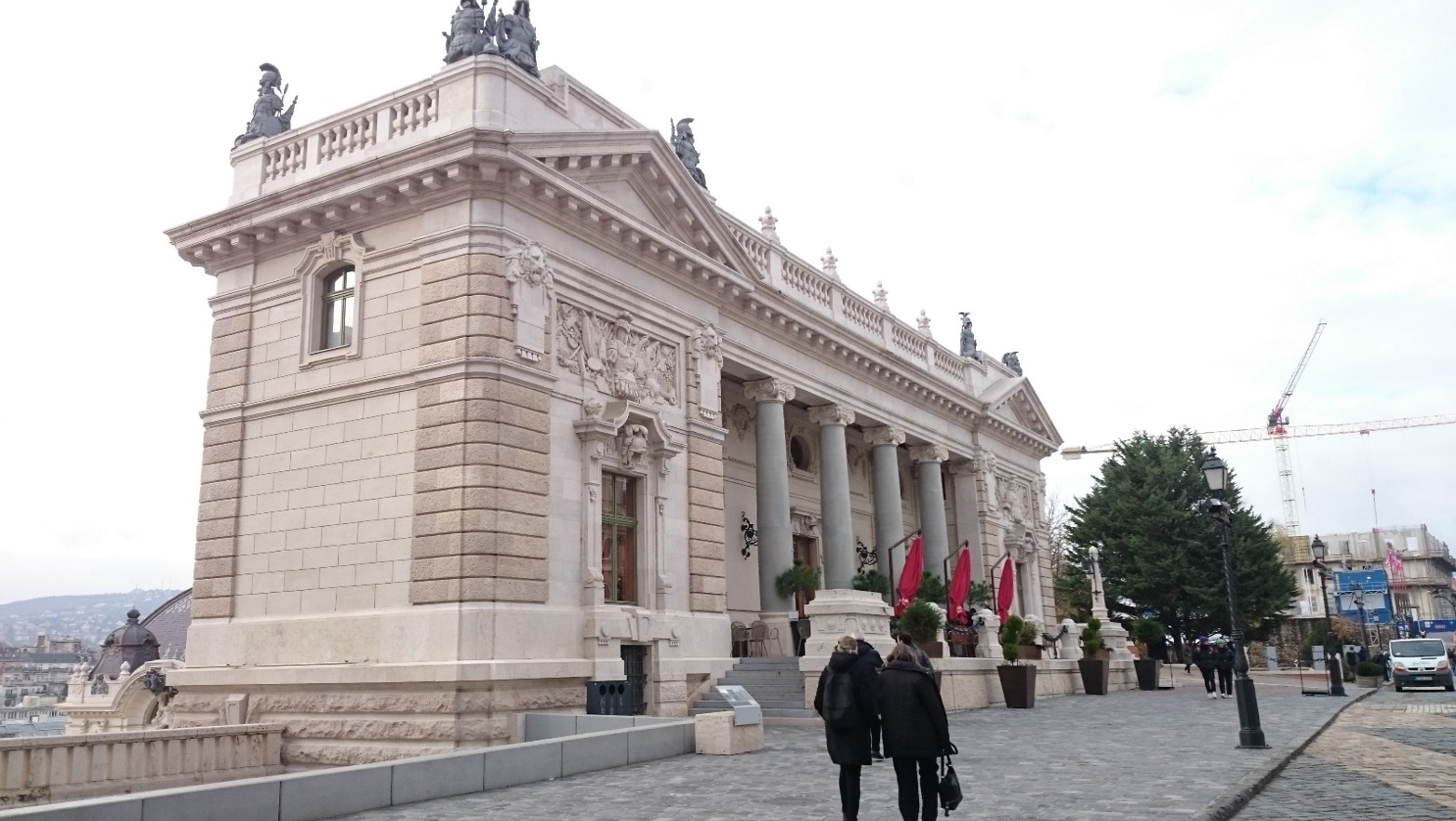
The building of the Guard House in Buda Castle, the location of the conference, where we heard details about the teaching of fine arts (Photo: Dávid Mészáros/pestbuda.hu)
In his speech at the event entitled "The Legacy of Alajos Hauszmann – Tradition and Modernity", Gergely Fodor, the Government Commissioner responsible for the renewal of the Buda Castle Quarter and the Citadel, emphasised that the reconstruction of the Buda Castle is not only about restoring the Hauszmannian buildings to their original shine inside and out. An equally important goal is to resurrect all the intellectual and practical knowledge that our ancestors knew at the turn of the century.
.FB.jpg)
The decorative art of historic buildings was also discussed at the Hauszmann conference (Photo: National Hauszmann Program/Facebook)
It was difficult to recreate the former furniture, fireplace, chandeliers and every decorative element of St. Stephen's Hall because few people in the whole country have the necessary knowledge. As Gergely Fodor put it:
"Like a needle in a haystack, we looked for a glass artist, a sculptor, a fine woodworker, a metal worker or even a painter with an artistic sense, whom we still guard like an Easter egg."
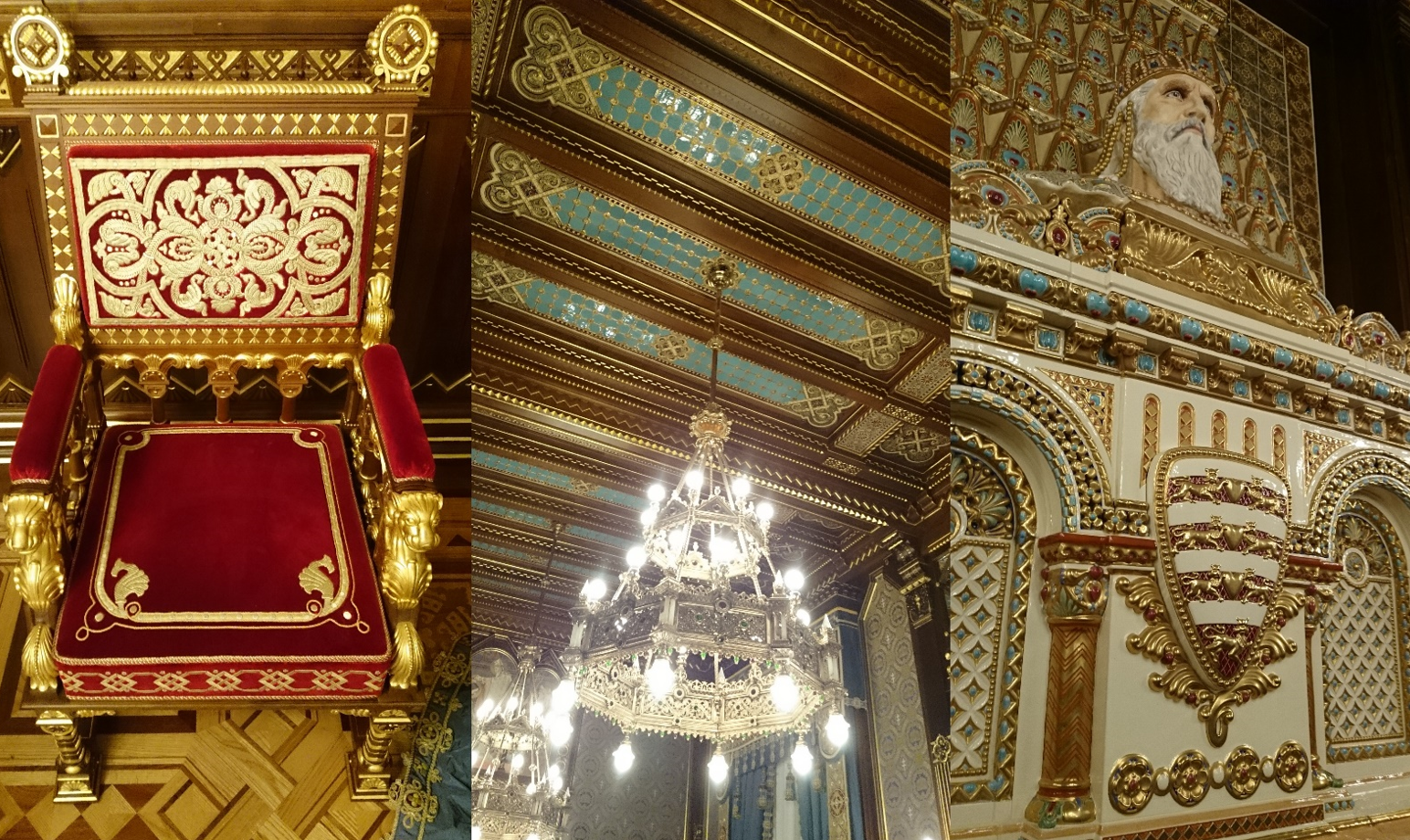
It is difficult to single out any of the masterpieces in St. Stephen's Hall. Whether we look at chairs, chandeliers and ceilings, or fireplace ornaments, their re-creation required more than just 21st-century solutions (Photo: Dávid Mészáros/pestbuda.hu)
Bence Madaras, Chairman of the Board of Trustees of the Hauszmann Foundation, explained in detail the goals and the results achieved so far: it is important that the teaching of handicrafts that are on the verge of extinction can begin as soon as possible. For this, it was necessary to search for the few masters who could personally pass on their knowledge to future generations, similarly to the old guild world.
The training will start in the fall of 2023 in Budapest, in cooperation with the Kisképző Secondary School of Visual Arts, in four specialisations: sculptor fine artist, glass artist, woodworking craftsman and metal artist. They also ensure interoperability between the individual majors. After its completion, the centre of education will be the Annavölgy Technical High School, which will be built next to Alajos Hauszmann's former summer house in Szentendre, which will occupy the site of the former military resort, which is now owned by the Hauszmann Foundation.
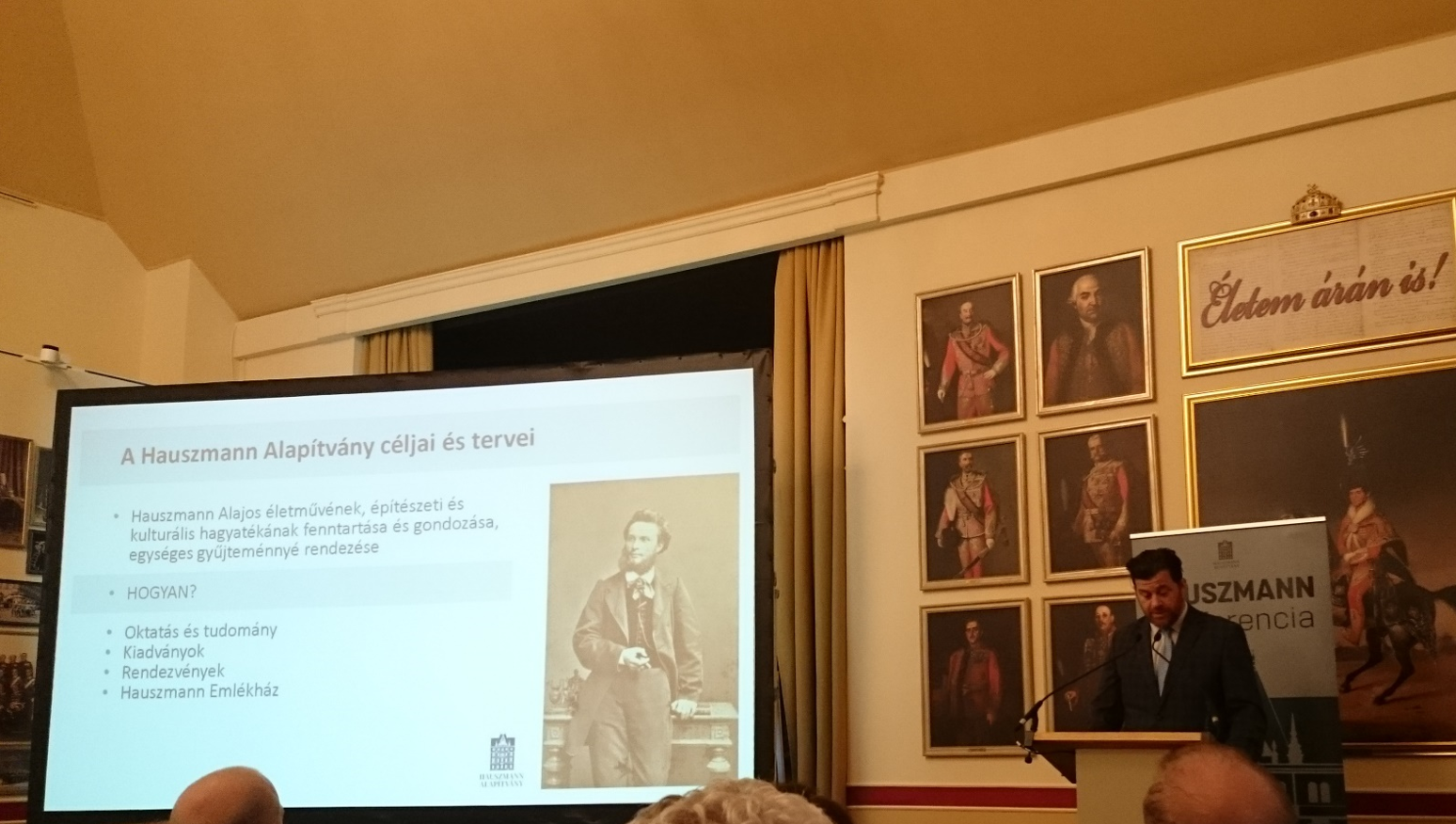
Presentation by Board of Trustees Chairman Bence Madaras on the goals and plans of the foundation (Photo: Dávid Mészáros/pestbuda.hu)
The training will greatly help to ensure that fewer practical obstacles arise during the restoration of historical buildings and parts of buildings taking place in Budapest (and other parts of the country) so that the work does not slow down. Bence Madaras also emphasised that Alajos Hauszmann started his professional life with manual labour and handicrafts before becoming one of Hungary's architectural giants, and in this spirit, they want to equip the students participating in the training with a wide range of knowledge.
The architect's former villa in Annavölgy, which was demolished after the war, is now being rebuilt and the Hauszmann Memorial House will be created in it - this is also one of the foundation's important tasks. The creation of a local educational trail in the areas of Szentendre owned by the foundation was also discussed, as well as the publication of several issues (first a critical edition of Hauszmann's diary, then a memorial volume for Endre Thék).
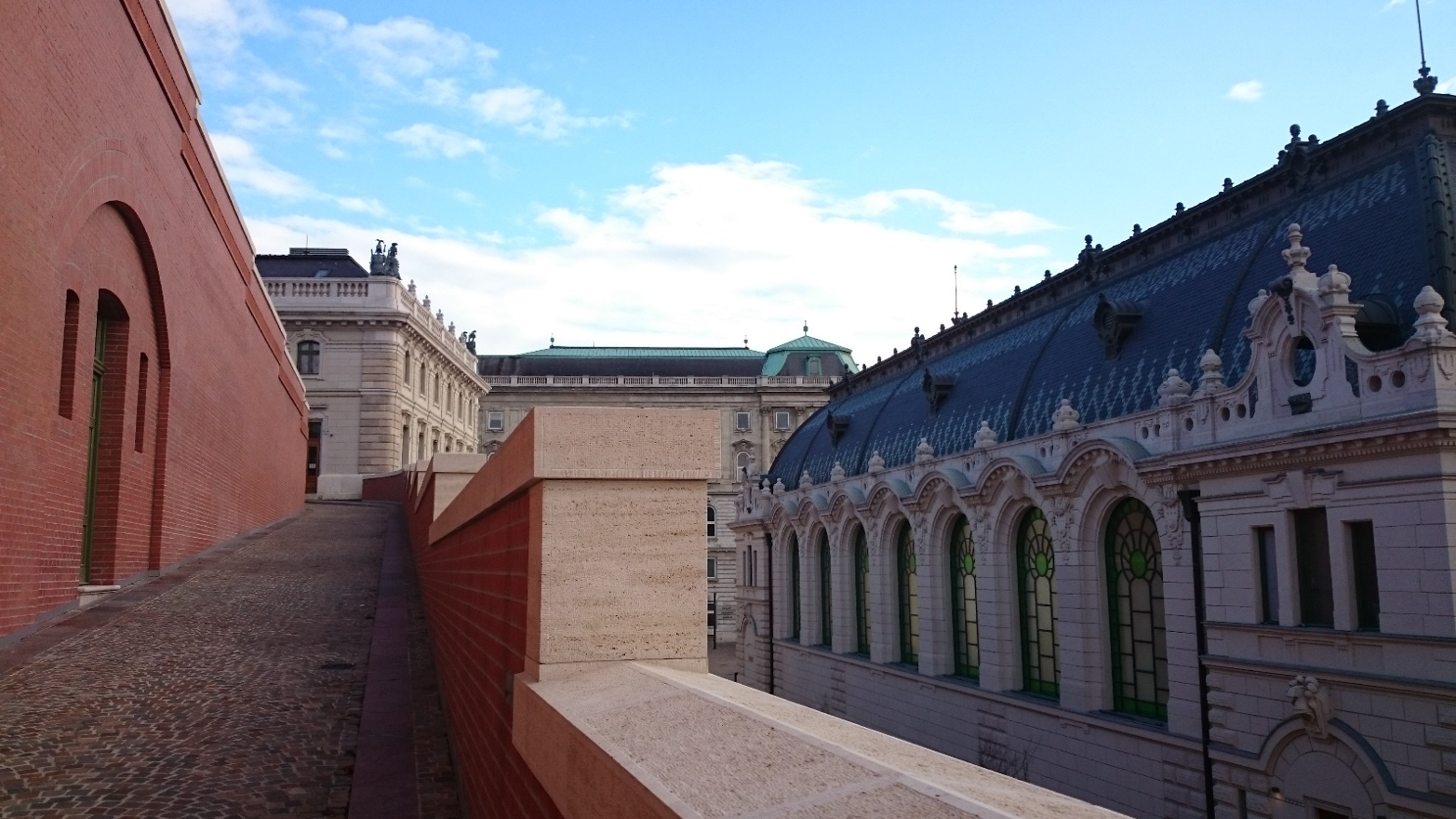
Among the successful reconstructions of recent years are the Hauszmann Ramp (left) and the Riding Hall building (right) (Photo: Dávid Mészáros/pestbuda.hu)
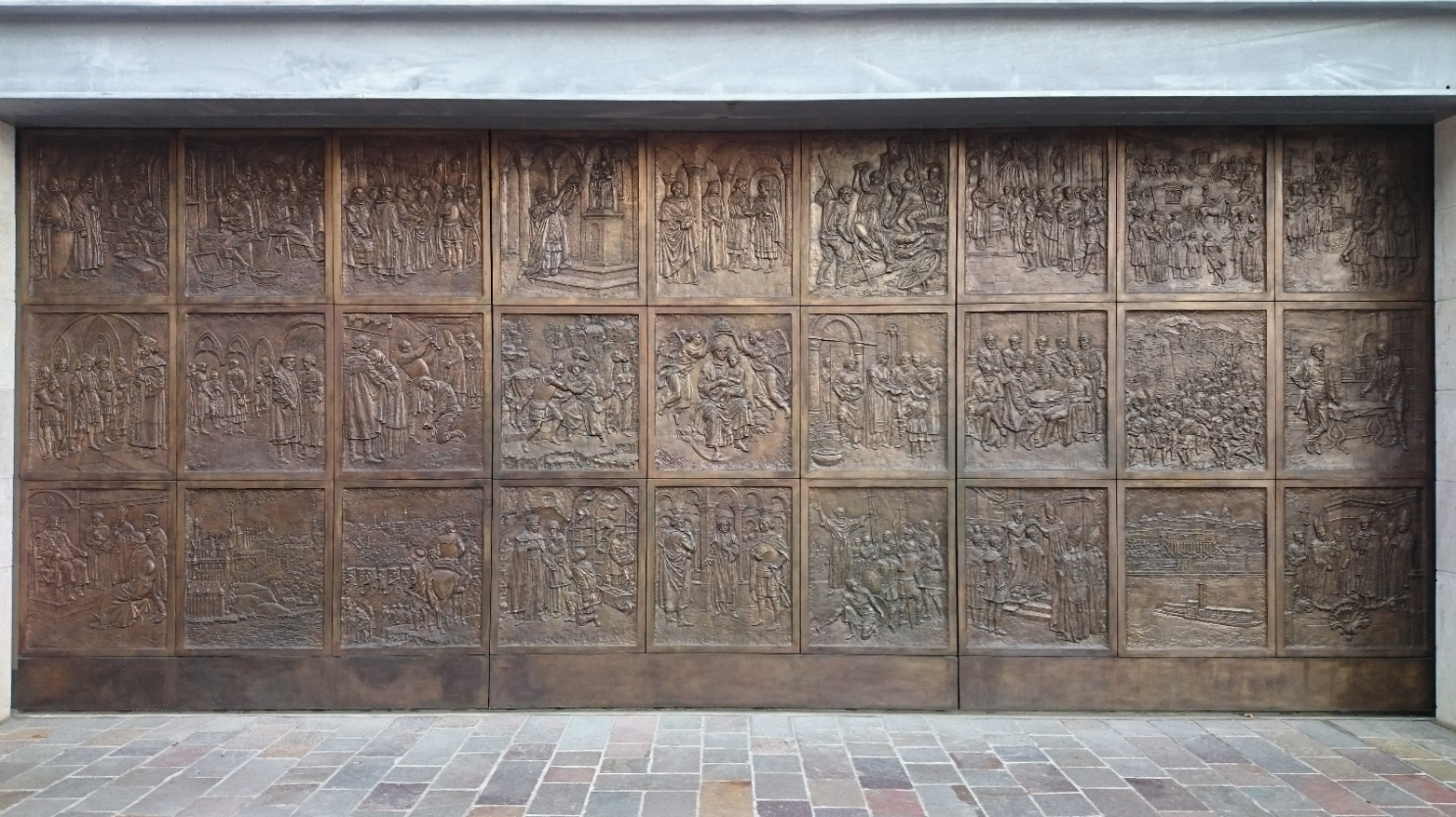
A novelty on the wall of the reconstructed Hauszmann Ramp: the entrance to the underground archaeological space is decorated with 27 reliefs depicting historical scenes related to Buda Castle (Photo: Dávid Mészáros/pestbuda.hu)
At the Hauszmann conference, heads of institutions, architects, historians, and art historians shared their knowledge, all of which are related to the education of artistic crafts and their renewal. Zsolt Füleky, the professional adviser of the Prime Minister's Office, drew attention to the digital aids of today's architecture, which can be used to beautifully reconstruct the treasures of the past: technology is now at the point where, for example, a detailed but black-and-white photo of György Klösz can completely regain the original colours, but the importance of mock-ups made with 3D printing has also grown by leaps and bounds in recent years.
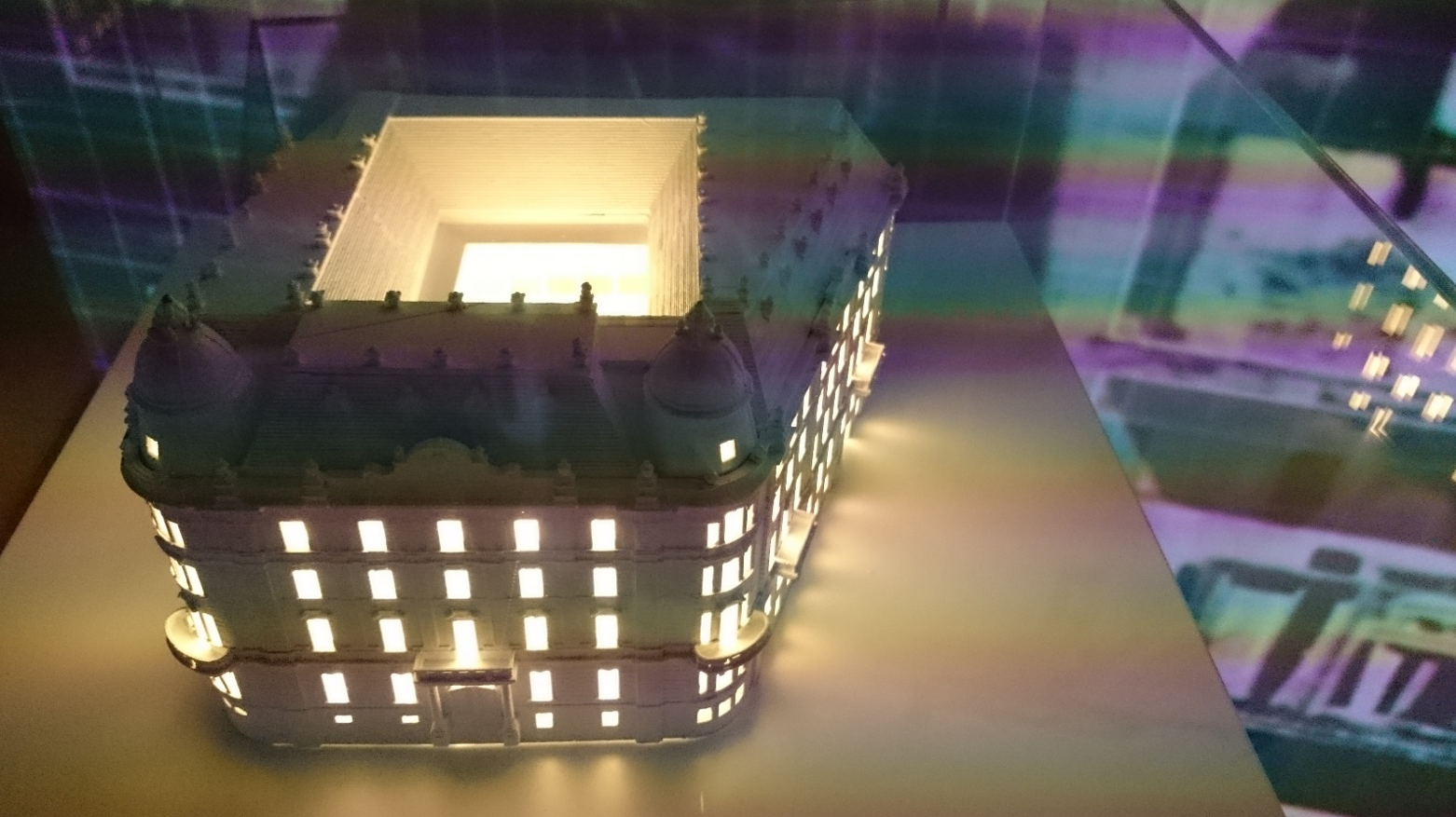
The model of the reconstructed Red Cross Headquarters illustrated with night lighting in the Budapest History Museum (Photo: Dávid Mészáros/pestbuda.hu)
Practical obstacles arose during the reconstruction of almost every ornate building or part of a building. Among these, the biggest challenge was the reconstruction of St. Stephen's Hall, stressed Sándor Finta, Deputy General Manager of the Castle Headquarters. Since not a single original pattern remained, the decorations of the chandeliers were made by a glass artist based on original photos. The help of Italian, French and German manufactories was also needed for the textile work.
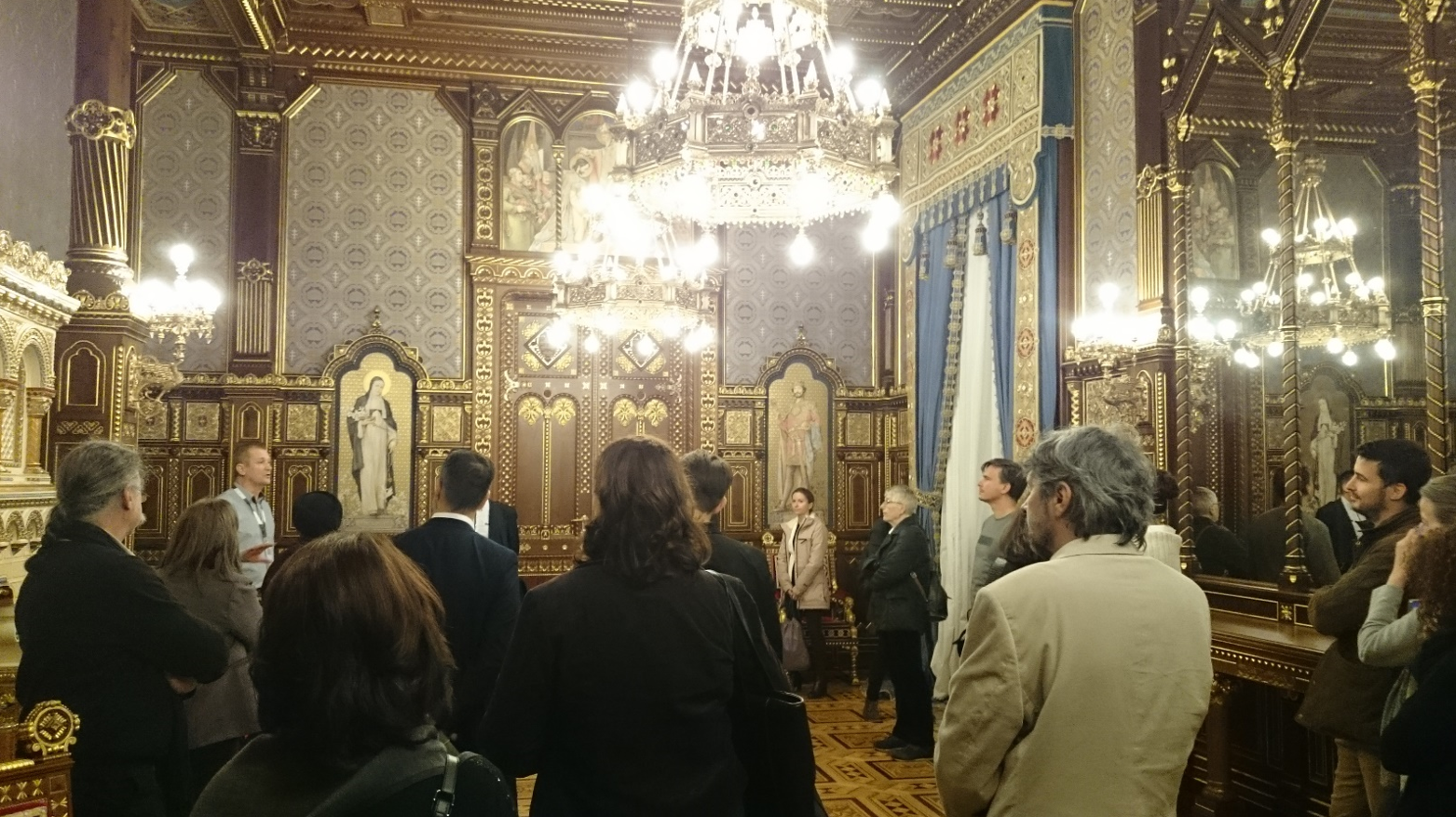
Professional visit to the St. Stephen's Hall, which was reborn last year (Photo: Dávid Mészáros/pestbuda.hu)
One of the most daring undertakings was the re-creation of the pyrogranite paintings depicting the kings of the Árpád House. These could be recreated using a special glass fusing method. One of these paintings cracked in the cross during the final glass fusing phase. The rapid restoration required a level of knowledge and precision that very few are capable of - this also proves the need for well-trained, talented craftsmen.
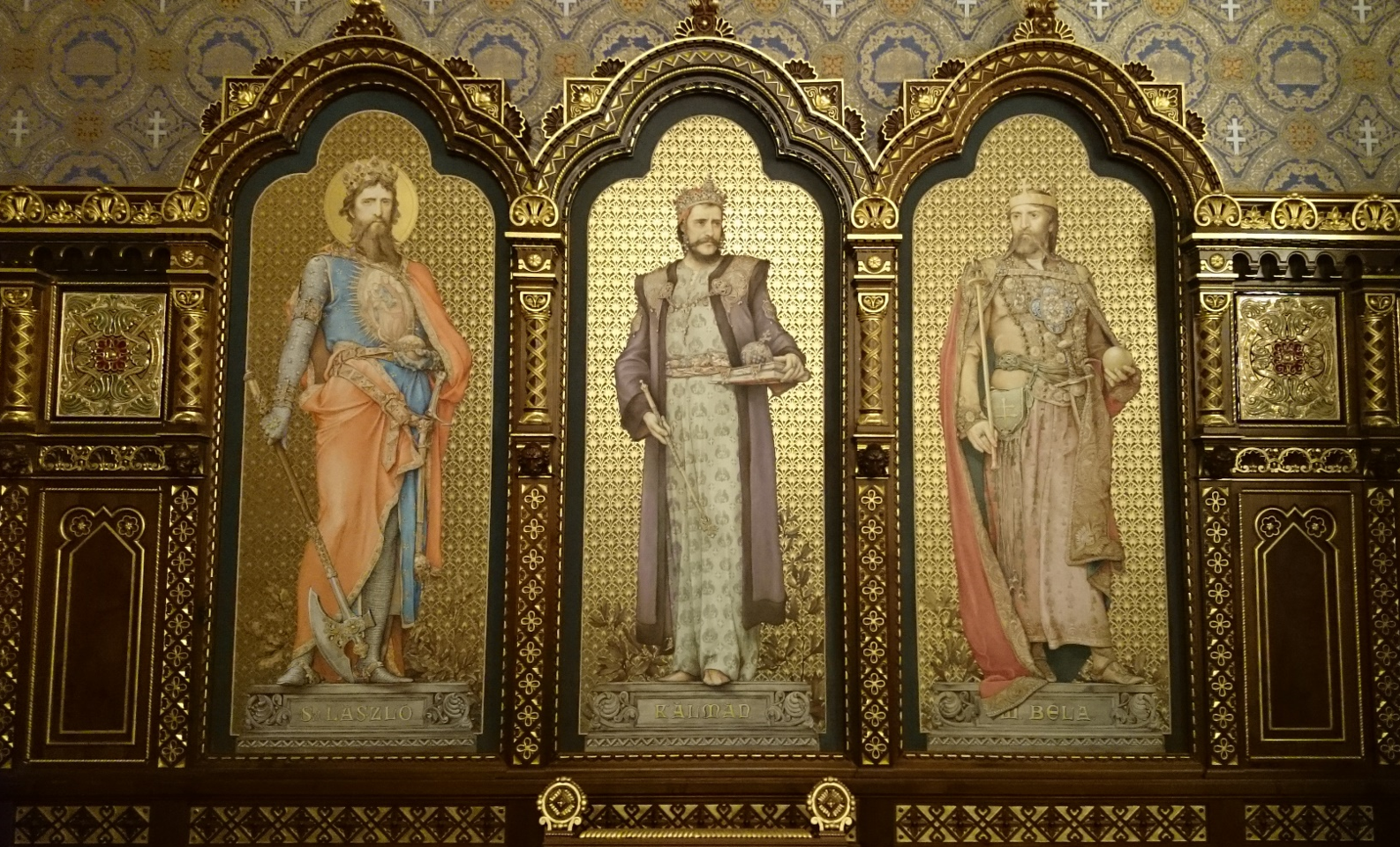
Figures of three Árpád House kings, Saint Ladislaus, Coloman the Learned, and Béla III in St. Stephen's Hall. These Zsolnay pyrogranite pictures are among the most fragile decorative elements (Photo: Dávid Mészáros/pestbuda.hu)
At the conference, Gergely Buzás, the Director of the King Matthias Museum in Visegrád, gave a lecture on the medieval stone carving craft with a European perspective, which experienced a kind of renaissance during the 19th century and enabled the continuation and completion of many buildings abandoned in the Middle Ages (for example, the Cologne Cathedral). In the lecture on the critical edition of the Hauszmann diary, editor and art historian Rita Karácsony mentioned that the famous architect wrote a long professional biography in addition to his personal diary. He reports on several of his experiences in both of his writings, but from a completely different perspective, sometimes creating contradictory impressions in the reader. The other presentations provided a summary of the craft heritage, as well as the construction and craft education of previous eras.
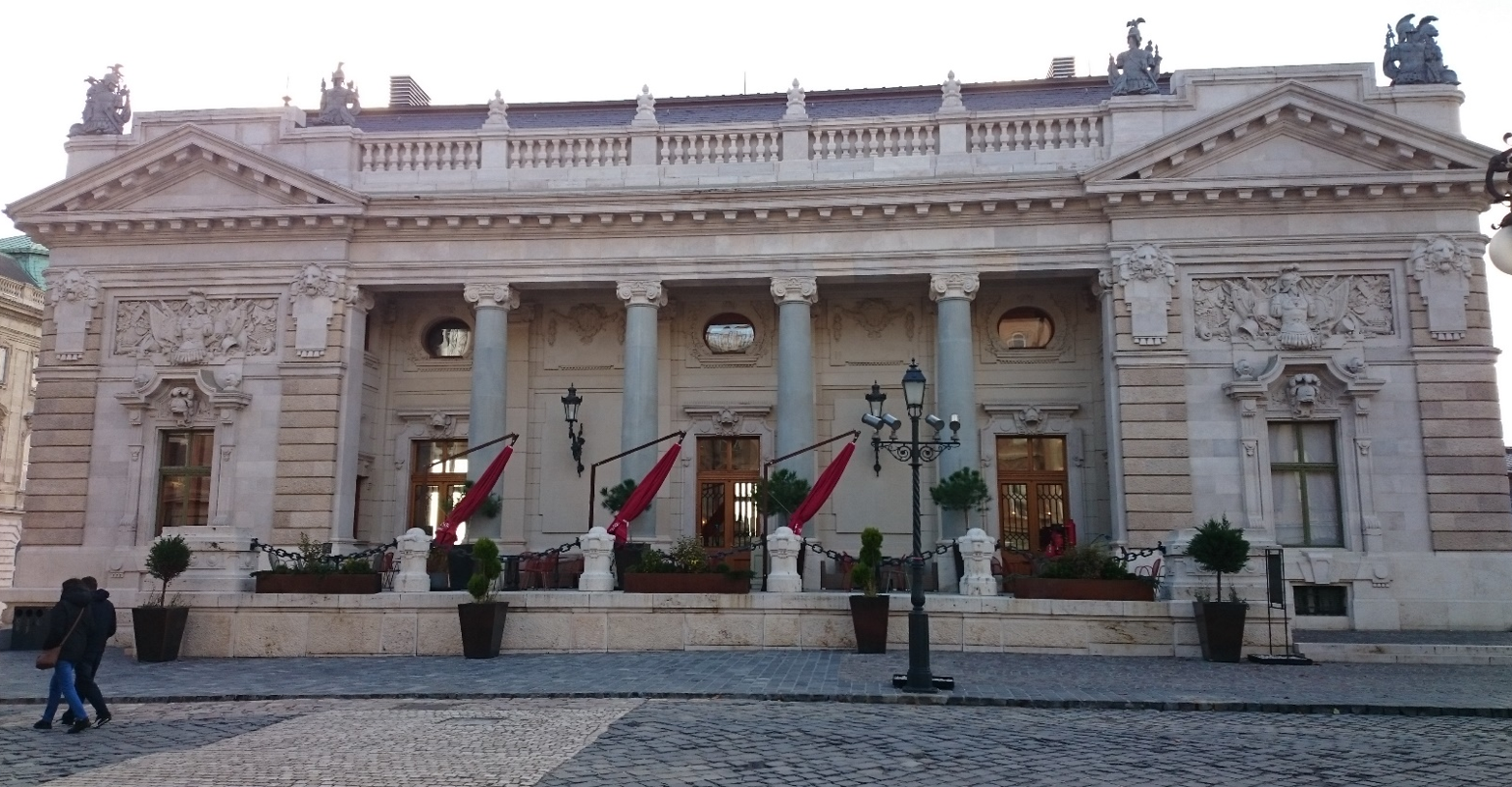
In the future, the public can also expect a status report on the training of craftsmen and the renovation results achieved, even again in the Royal Guard building (Photo: Dávid Mészáros/pestbuda.hu)
Alajos Hauszmann insisted not only on the use of Hungarian craftsmen but also on the fact that the architect has a thorough knowledge of the manual crafts that give the practical side of construction. It is in this spirit that the value-preserving undertaking was born so that these crafts do not fall from the list of universal Hungarian public treasures. The practical site is available for all of this, as the Headquarters of the Red Cross Society, the Headquarters of Hungarian Defense Forces and Archduke Joseph's Palace, and then the Buda Castle itself, will be rebuilt. These artists will be the decorators of the city.
Cover photo: Government Commissioner Gergely Fodor's greeting at the Hauszmann conference (photo: Dávid Mészáros/pestbuda.hu)

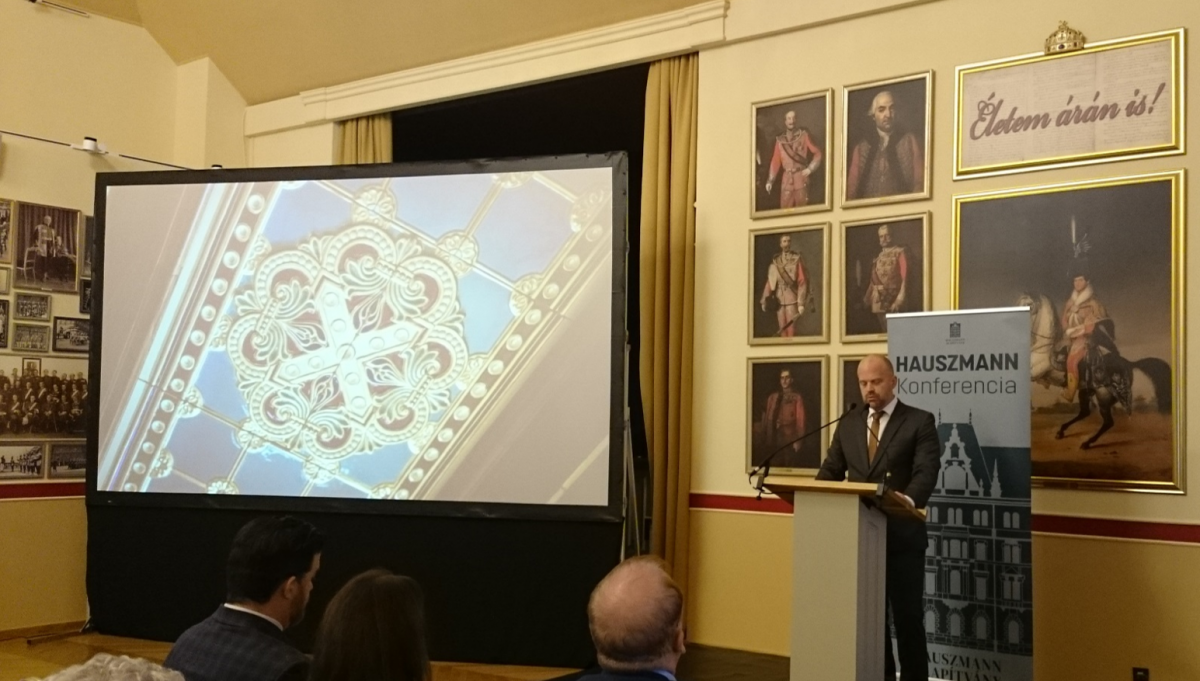
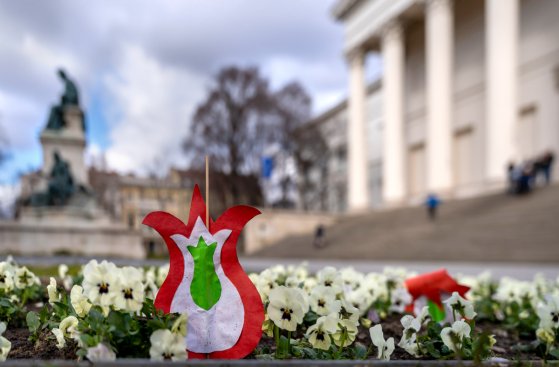

































Hozzászólások
Log in or register to comment!
Login Registration